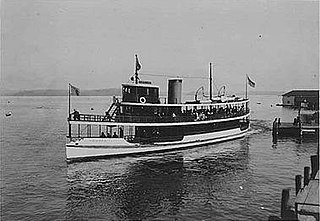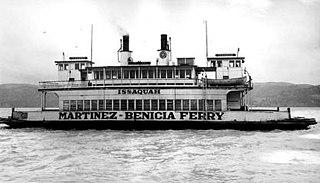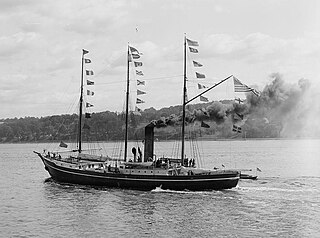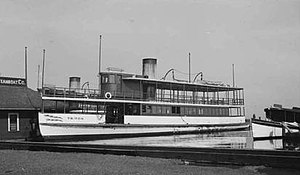
Lake Washington steamboats and ferries operated from about 1875 to 1951, transporting passengers, vehicles and freight across Lake Washington, a large lake to the east of Seattle, Washington. Before modern highways and bridges were built, the only means of crossing the lake, other than the traditional canoe or rowboat, was by steamboat, and, later, by ferry. While there was no easily navigable connection to Puget Sound, the Lake Washington Ship Canal now connects Lake Washington to Lake Union, and from there Puget Sound is reached by way of the Hiram M. Chittenden Locks.

The steamboat Aquilo operated on Lake Washington and Puget Sound in the first part of the 20th century.

The steamboat Fortuna was a vessel that operated on Lake Washington in the first part of the 20th century.

The steamboat L.T. Haas was a vessel that operated on Lake Washington in the first part of the 20th century.

The steamboat Urania was a vessel that operated on Lake Washington and Puget Sound in the first part of the 20th century.

Cyrene was a steamboat that operated initially on Puget Sound and later on Lake Washington from 1891 to 1914. Cyrene and another similar vessel Xanthus were somewhat unusual in that they had clipper bows and were both originally built as yachts.

Lady of the Lake was a wooden steamboat that operated on Puget Sound from 1897 to 1903. Following a fire in 1903, the vessel was rebuilt as the tug Ruth.

West Seattle was a side-wheel driven steam-powered ferry built in 1907.

Issaquah was a steam ferry built in 1914 that operated on Lake Washington and in San Francisco Bay.

Leschi was a steam ferry that operated on Lake Washington from 1913 to 1950, and afterwards on Puget Sound until 1967. From 1969 to 1986 the vessel was a floating cannery in Alaska.

C.C. Calkins was a small steamboat built in 1890 which served on Lake Washington.

Concordia was a steamboat that ran on Puget Sound from 1930 to 1976. Although later converted to diesel power, Concordia was the last inland commercial steamboat ever built on either Puget Sound or the Columbia river.

Atlanta was a steamboat built in 1908 at Houghton, Washington which served on Lake Washington and Puget Sound until 1938, when it was converted into a diesel-powered houseboat.

Suquamish, built in 1914, was the first diesel-engined passenger vessel in the United States. Much later Suquamish was converted to a commercial fishing vessel and was registered as a Canadian vessel under the name Terry.

Aquilo was a steam yacht which was built in Boston in 1901 for William Phelps Eno, a wealthy man who was the inventor of the stop sign. In 1910, Eno sold Aquilo and the yacht was brought to the west coast of North America, where it was operated principally in Puget Sound and coastal British Columbia. Aquilo had a long succession of wealthy owners. In 1966, the yacht caught fire and sank while en route from Seattle to Los Angeles.

The steamboat Acme operated on Lake Washington and also on the Sammamish Slough to Bothell, Washington from 1899 to 1910, when it was destroyed by fire.

The steamship General Frisbie was a wooden two-deck passenger ship built in 1900, named after John B. Frisbie. She was designed for use as a ferry between Vallejo and San Francisco. The steamer was successful in that role and was the fastest ship on the route when she began service. Improved roads, bridges, and automobiles reduced demand for ferry service in the Bay Area, and newer ships were optimized for transporting cars, so General Frisbie was retired in the late 1920s.

SS Roosevelt was an American steamship of the early 20th century. She was designed and constructed specifically for Robert Peary′s polar exploration expeditions, and she supported the 1908 expedition in which he claimed to have discovered the North Pole.

Dawn was a wooden passenger ferry on Lake Washington in the early part of the twentieth century.

Captain John Laurentius Anderson was a preeminent figure in Washington state maritime industries in the first half of the twentieth century, particularly ferry service, shipbuilding, and ship-based tourism. He ran the largest ferry fleet on Lake Washington for three decades. He ran a large ferry fleet in Puget Sound. He built more than a dozen vessels at his shipyards, including the first ocean-going ship ever built on Lake Washington.























